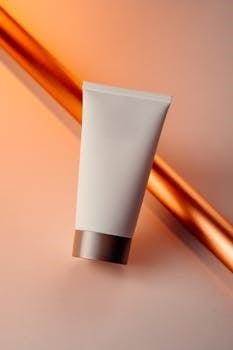Bolus Tube Feeding⁚ An Overview
Bolus tube feeding involves delivering formula directly into the stomach through a feeding tube using a syringe. This method is suitable for individuals who can tolerate larger volumes of food at one time, typically during waking hours.
Definition of Bolus Feeding
Bolus feeding is a method of delivering nutrition where a specific amount of formula is administered through a feeding tube over a short period, usually 10 to 30 minutes. This contrasts with continuous feeding, which delivers formula at a slower, consistent rate over a longer duration. Bolus feedings mimic the natural eating pattern, providing larger volumes of formula several times a day. The formula is typically administered using a syringe, allowing for controlled and intermittent delivery directly into the stomach or jejunum. This method allows for breaks between feeds.
Indications for Bolus Feeding
Bolus feeding is indicated for patients who can tolerate intermittent, larger volumes of formula. It is often suitable for those seeking a more normal eating pattern and who are stable medically.
Patients Who Can Tolerate Bolus Feedings
Bolus feedings are typically well-tolerated by individuals who have adequate gastric emptying and do not experience significant reflux. They are often appropriate for patients who desire a more flexible feeding schedule, mimicking normal meal times. Patients must be able to handle larger volumes delivered intermittently. Careful monitoring is crucial to ensure tolerance, observing for signs like distention, discomfort, or vomiting. Healthcare providers assess individual patient factors to determine suitability. Bolus feeding offers convenience for active individuals, allowing greater freedom compared to continuous feeding methods, when appropriately indicated.

Equipment Needed for Bolus Feeding
Essential equipment for bolus feeding includes an enteral feeding syringe, a clean jug for decanting formula, and water for flushing the feeding tube. These items ensure safe and effective administration of nutrition.
Enteral Feeding Syringe
The enteral feeding syringe is a crucial tool for administering bolus feeds, typically a 60ml syringe. This syringe is specifically designed for enteral use, ensuring it connects securely to the feeding tube. It allows for controlled delivery of the formula into the stomach. Before use, inspect the syringe for any damage. Clean the syringe thoroughly after each feeding with warm, soapy water. Replace the syringe regularly to maintain hygiene. Proper handling of the syringe is vital for preventing contamination and ensuring accurate formula delivery during bolus feeding.
Clean Jug for Decanting Feed
A clean jug is essential for safely decanting the enteral formula before administering a bolus feed. Choose a jug made of food-grade material that is easy to clean and sanitize. Before each feeding, ensure the jug is thoroughly washed with hot, soapy water and rinsed well. Avoid using abrasive cleaners that could leave residue. The jug should be used exclusively for decanting enteral feeds to prevent cross-contamination. After each use, dry the jug completely to prevent bacterial growth. Using a dedicated, clean jug is a simple yet crucial step in maintaining hygiene during bolus feeding.
Water for Flushing the Feeding Tube
Flushing the feeding tube with water is a vital step in bolus feeding to maintain patency and prevent clogs. Use sterile or potable water, as directed by your healthcare provider. Always flush the tube before and after each feeding to clear any residual formula. A typical flush volume ranges from 30 to 50 ml, but follow your healthcare provider’s specific instructions. Administer the water slowly using a syringe. Regular flushing helps ensure the feeding tube remains functional, reducing the risk of complications. If resistance is encountered, do not force the water and consult your healthcare professional for guidance.

Bolus Feeding Procedure
The bolus feeding procedure involves several key steps, including hand hygiene, patient positioning, tube flushing, and formula administration. Following these steps carefully helps ensure safe and effective delivery of nutrition.
Hand Washing and Positioning
Prior to initiating any bolus feeding, meticulous hand washing with soap and water is crucial to prevent infection. Proper positioning of the patient is also essential. Ideally, the individual should be sitting upright or with their head elevated at least 30 degrees. This position minimizes the risk of aspiration during and after the feeding. Maintain this elevated position for at least an hour following the completion of the bolus feeding to further reduce the chance of regurgitation or aspiration. Ensure the patient is comfortable and secure in their position.
Flushing the Feeding Tube
Before administering the bolus feed, it is imperative to flush the feeding tube with water. This crucial step ensures the tube is clear of any obstructions and functions correctly. Use the prescribed amount of water, typically 30-60ml, as directed by the healthcare professional. Gently inject the water using a syringe. Observe for any resistance, which may indicate a blockage. If resistance is encountered, do not force the water; instead, consult with a healthcare provider for guidance on clearing the obstruction. Regular flushing helps maintain patency and prevents complications.
Administering the Formula
After flushing the feeding tube, carefully administer the prescribed formula. Pour the prepared formula into the syringe, holding it upright to prevent air from entering the tube. Gently push the formula into the feeding tube using the syringe plunger. Administer the formula slowly, allowing it to flow gradually into the stomach. Monitor the patient for any signs of discomfort, such as cramping, bloating, or nausea. If discomfort occurs, slow down the rate of administration or pause temporarily. Ensure the entire prescribed volume of formula is administered, unless otherwise instructed by a healthcare professional.

Frequency and Volume of Bolus Feedings
Bolus feedings are typically administered several times a day, often every 4 to 6 hours during waking hours. The volume of each feeding varies based on individual needs and tolerance.
Typical Bolus Volume
The typical bolus volume usually ranges from 100 to 300ml, administered over a 10 to 30-minute period. However, individual requirements may differ, and a healthcare professional should determine the appropriate volume based on the patient’s specific needs and tolerance. A starting volume may be lower, gradually increased as tolerated. Monitoring for signs of discomfort, such as abdominal distension or nausea, is crucial. Always adhere to the prescribed volume to ensure optimal nutrition and prevent complications. Adjustments should only be made under medical supervision, and consult with a healthcare provider.
Feeding Schedule
Bolus feedings are typically administered every 4 to 6 hours during waking hours, mimicking a normal meal schedule. The specific timing and frequency will be determined by the healthcare team based on individual nutritional needs and tolerance; It’s important to maintain a consistent schedule to optimize digestion and absorption. Water should be given between feedings to ensure adequate hydration. This schedule allows for periods of fasting overnight if appropriate. Adjustments to the schedule should be made in consultation with a healthcare professional. Consistency in timing and volume is essential for effective bolus feeding and overall well-being.
Important Considerations
Prior to each bolus feeding, verify the feeding tube placement to ensure proper delivery of nutrients. Also, administer formula at room temperature to prevent discomfort and promote better tolerance during the feeding process.
Checking Tube Placement
Before initiating any bolus feeding, confirming the correct placement of the feeding tube is paramount to prevent complications. Aspiration of gastric contents using a syringe is a common method, followed by pH testing to ensure acidity, indicating stomach placement. Consult healthcare provider instructions for accurate tube placement verification techniques. Regular assessment prevents misdirection of formula into the lungs, reducing the risk of pneumonia. Document the placement check each time to maintain a record of the process and any issues encountered during the process, or difficulties during checking.
Formula Temperature
Administering formula at room temperature is generally recommended for bolus feedings to minimize gastrointestinal discomfort. Avoid using formula that is either too cold or too hot, as extreme temperatures can cause cramping or other adverse reactions. Allow refrigerated formula to sit at room temperature for a period before administration, or gently warm it. Always adhere to healthcare professional’s recommendations regarding the appropriate temperature for the specific formula being used. Consistent temperature control helps ensure tolerance of the feeding.

Potential Problems and Solutions
Addressing challenges during bolus feeding is crucial. Problems like slow feeding, discomfort, or tube blockage can occur. This section outlines common issues and practical solutions to ensure successful and safe feedings.
Difficulty with Bolus Feeding
Sometimes, individuals may experience difficulty tolerating bolus feedings. This could manifest as discomfort, bloating, nausea, or even vomiting. Slow administration of the formula is a crucial first step. Ensure the patient is positioned upright during and after feeding to aid digestion. If these issues persist, consider reducing the volume of each bolus or increasing the time between feedings. Consulting with a healthcare professional or registered dietitian for personalized adjustments to the feeding plan is advisable. They can assess the situation and recommend appropriate strategies. Proper tube placement should also be verified.
When to Contact Healthcare Professionals
It’s essential to know when to seek professional medical advice regarding bolus tube feeding. Contact healthcare providers immediately if you observe signs of aspiration, such as coughing or difficulty breathing during or after feeding. Persistent vomiting, diarrhea, or abdominal distension that doesn’t resolve with adjustments to the feeding schedule also warrant prompt attention. Any signs of infection at the tube insertion site, including redness, swelling, or pus, should be evaluated. Changes in mental status or unresponsiveness require immediate medical intervention. Always follow your healthcare provider’s specific instructions and seek clarification when needed.

